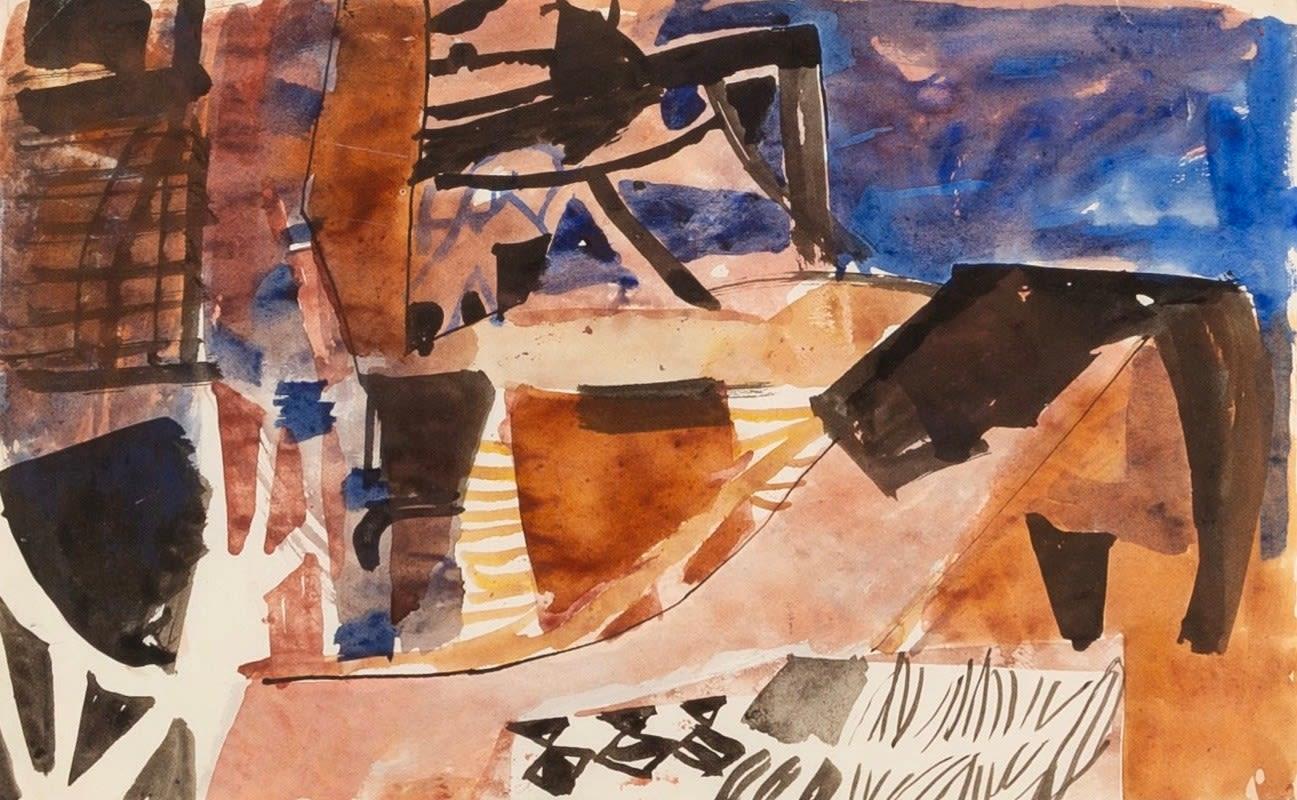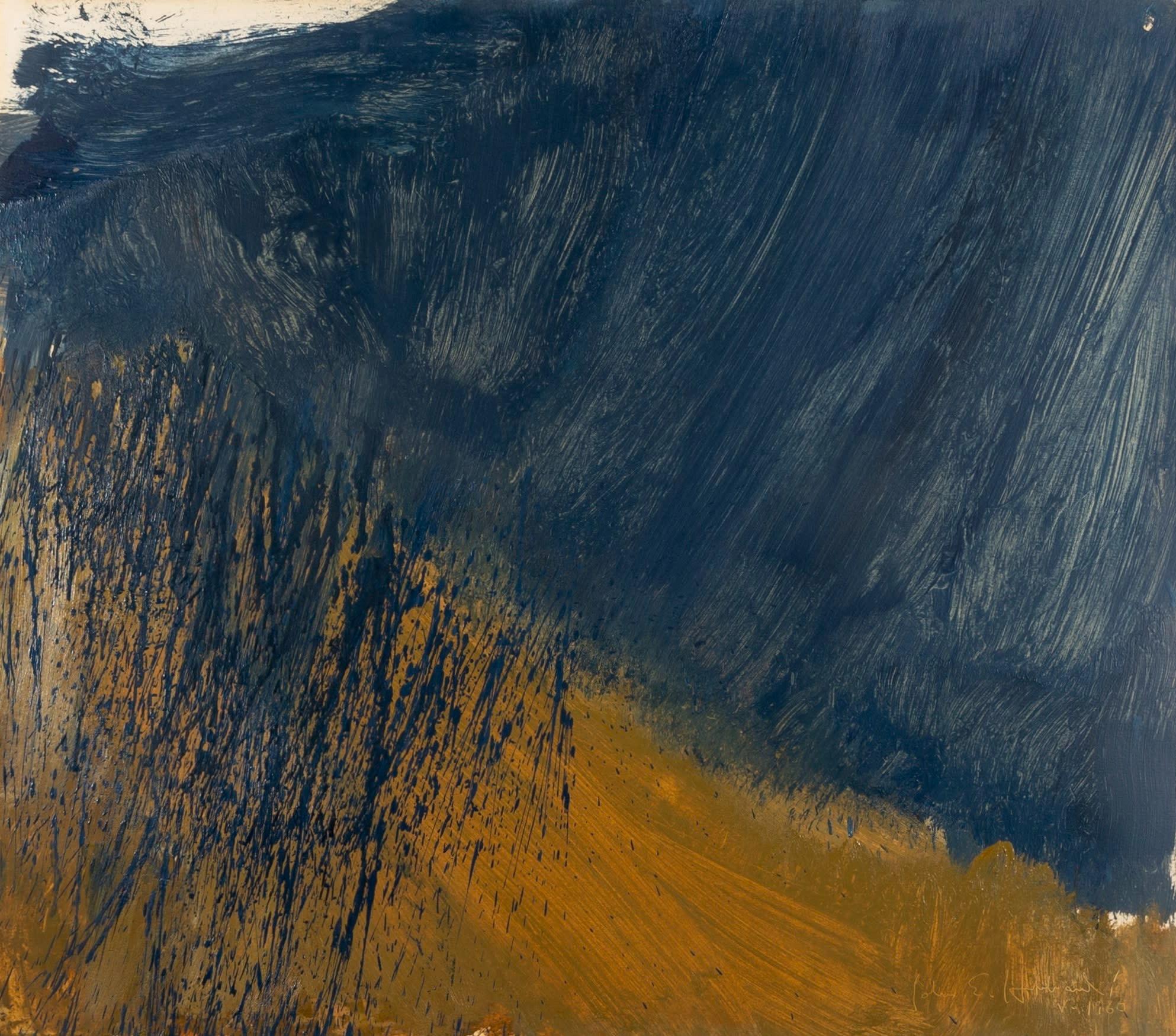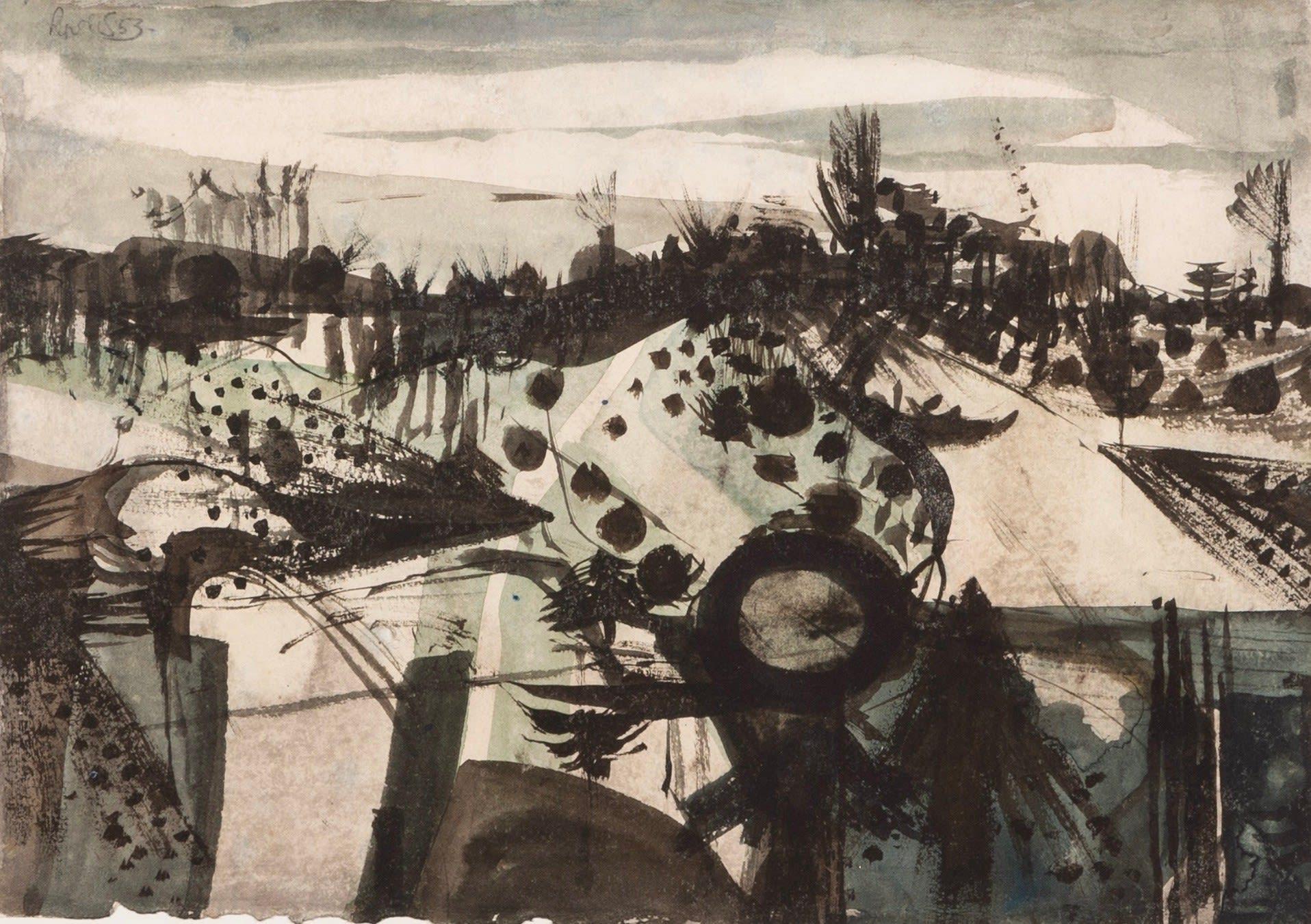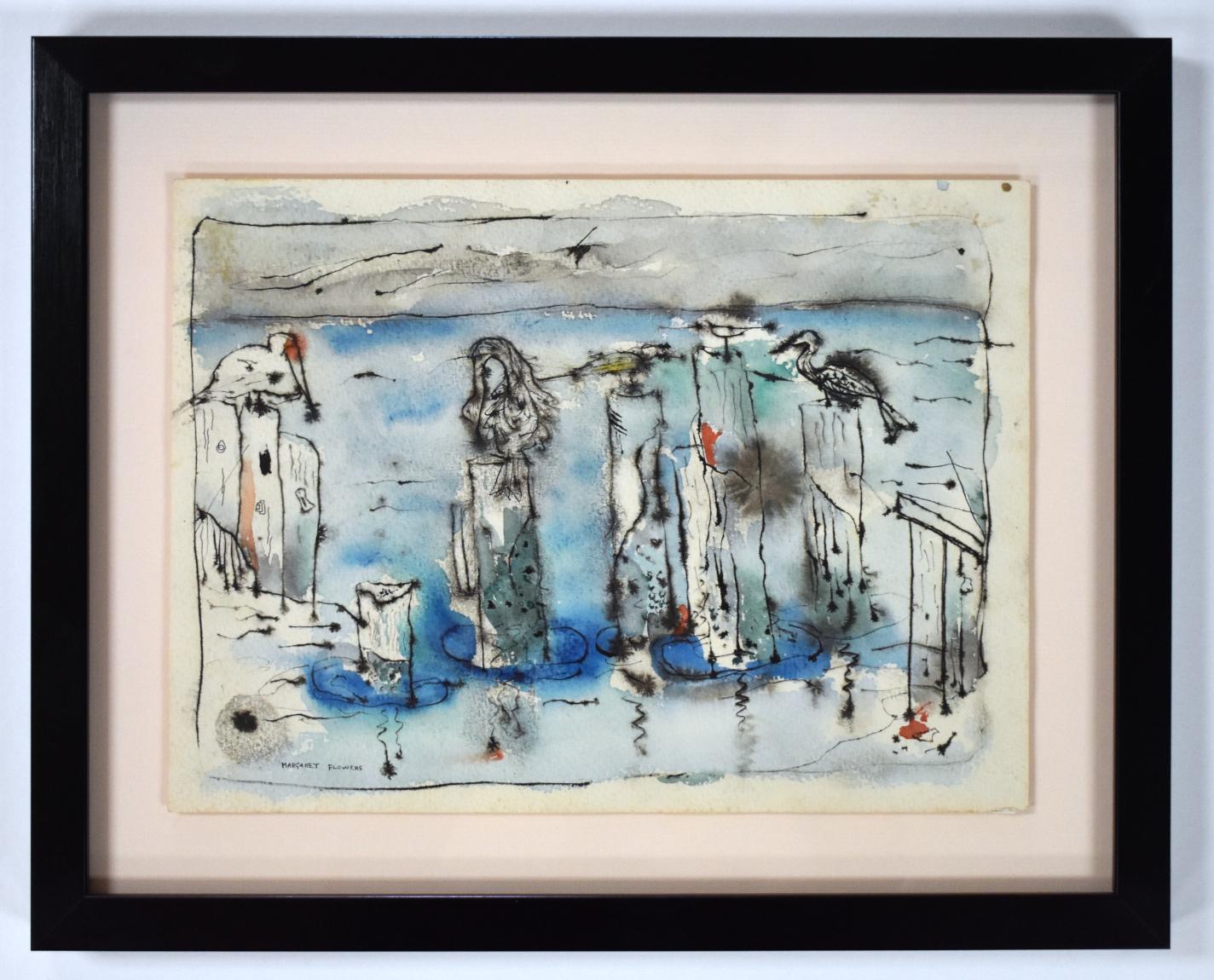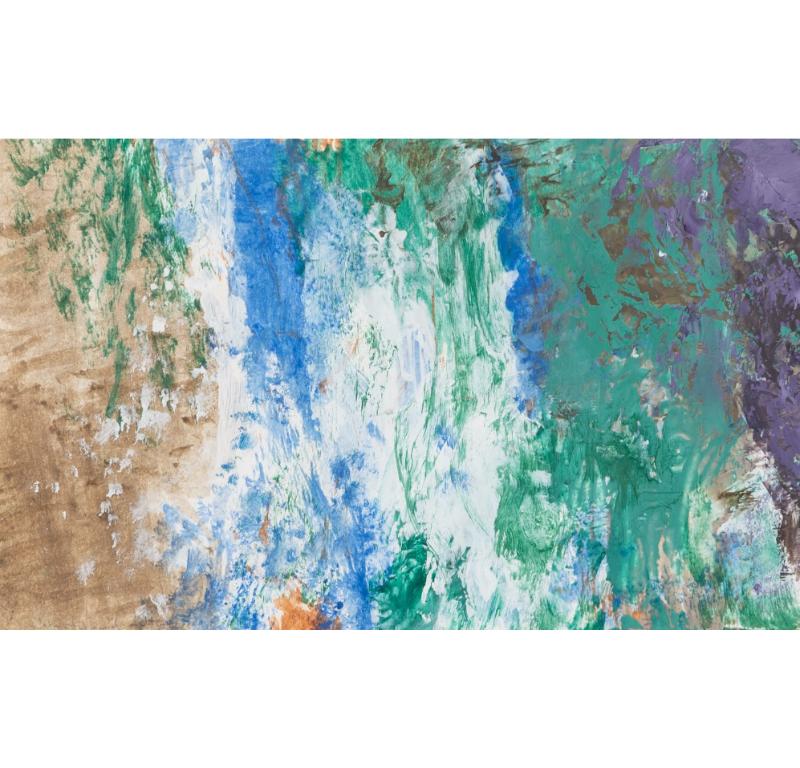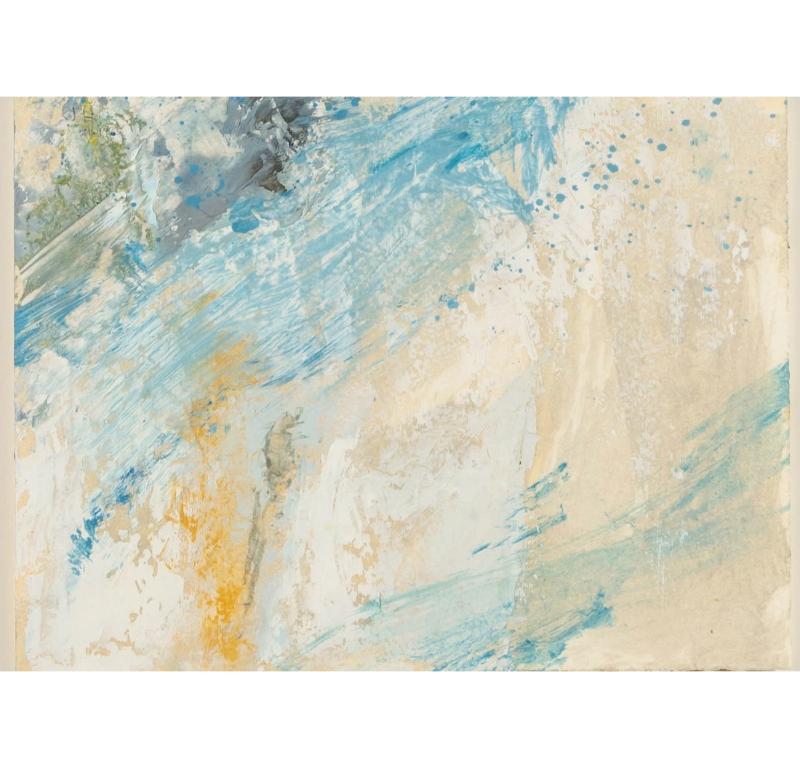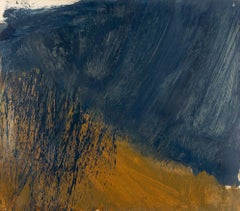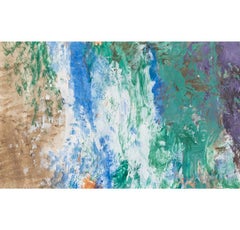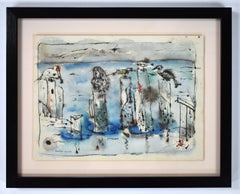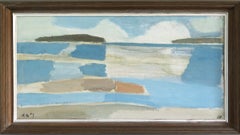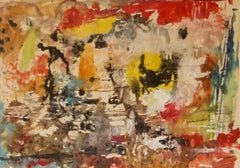Items Similar to Coastal Scene, Gouache Painting by Peter Potworowski, 1950s circa
Want more images or videos?
Request additional images or videos from the seller
1 of 3
UnknownCoastal Scene, Gouache Painting by Peter Potworowski, 1950s circa1950s circa
1950s circa
$2,651.35
£1,950
€2,276.43
CA$3,670.99
A$3,989.73
CHF 2,138.13
MX$48,442.47
NOK 26,842.97
SEK 24,892.77
DKK 17,002.13
About the Item
Coastal Scene, Gouache Painting by Peter Potworowski, 1950s circa
Additional information:
Medium: Gouache
17 x 21.5 cm
6 3/4 x 8 1/2 in
Tadeusz Piotr (Peter) Potworowski was a Polish abstract and figurative painter who lived and exhibited in Paris, Poland, Sweden and England.
Potworowski was born in Warsaw in 1898. After serving in the First World War, Potworowski enrolled at the Warsaw University of Technology to study architecture, though his studies were halted by the Bolshevik campaign. After the end of the Polish-Soviet War in 1921, Potworowski returned to Warsaw and began to study art at the school of Konrad Krzyżanowski. By the following year, he had taken a place at the Academy of Fine Arts in Krakow, where he studied under Józef Pankiewicz. It was Pankiewicz who incorporated Potworowski into the Paris Commute, or Kapists, a group of Polish artists who travelled to the French capital in 1924.
During his seven years in Paris he became personally acquainted with Pablo Picasso, Pierre Bonnard, Jean Cocteau, Constantin Brancusi and attended for a short time Fernand Léger's studio. It was through this job that he met his first wife Magdalena Mańkowska, a student of anthropology in Paris. After marrying in France, and visiting Britain in 1928, the couple returned to Poland in 1930, where their first son John was born.
In 1931, Warsaw was the locale of the first Kapists exhibition, entitled New Generation, which took place at the Artist's Club, Hotel Polonia, and the Institute of Art Propaganda. Here, Potworowski received a prize for his painting Three Women in the Interior. The following year, he held his first solo exhibition at the Makowski Salon in Poznań. This success was sustained through 1937 when the artist received a silver medal at the International Exhibition of Art and Technology in Paris, as well as the award from the Minister of Foreign Affairs. After this strong development, Potworowski had a travelling solo exhibition arranged, held in 1938 at the Institute of Propaganda of Art in Warsaw and then in Lviv.
Following the invasion of Poland in 1939, Potworowski escaped to Sweden via Lithuania. It was from here that the artist, with his wife and two young children, made his way to Britain, arriving in 1943. After serving in Scotland, Potworowski settled in London, and in January 1946, an exhibition of 33 of his works was held at the Redfern Gallery. This was followed by regular exhibitions with the Redfern, Gimpel Fils (1948 onwards) and The London Group, to which he was elected a member in 1949. He was also the president of the Association of Polish Artists and published regularly in the monthly magazine "Nowa Polska".
Potworowski's teaching career included eight years as Professor of Painting at the Bath Academy of Art, Corsham (1949-57), where he had considerable European influence, specifically on abstraction, and was acknowledged by contemporaries including Peter Lanyon, Bryan Wynter, Terry Frost and Adrian Heath. Making his way to Cornwall, Potworowski took a studio at Sancreed near Penzance. The landscape here invigorated his work and he painted extensively in the Duchy. In 1956, Potworowski was elected to the Royal West of England Academy and in 1960 he won an award at the 30th Venice Biennale.
In the relative peace of the 1950s, Potworowski travelled and painted extensively with his professional and romantic partner Doreen Heaton Potworowska, whom he met in 1952 while teaching at Corsham. They visited much of Europe including in France, Spain and Italy, before returning to his native Poland in 1958, where the artist spent the last four years of his life. He died in Warsaw in 1962. In 1996 a major retrospective exhibition was held at the Polish National Gallery of Contemporary Art in Warsaw.
Peter Potworowski's work is held extensively in notable private and public collections internationally, including the Victoria Art Gallery, Royal West of England Academy and the Tate.
- Creation Year:1950s circa
- Dimensions:Height: 6.75 in (17.15 cm)Width: 8.5 in (21.59 cm)
- Medium:
- Period:
- Condition:
- Gallery Location:Kingsclere, GB
- Reference Number:1stDibs: LU2718214575722
About the Seller
No Reviews Yet
Vetted Professional Seller
Every seller passes strict standards for authenticity and reliability
Established in 2010
1stDibs seller since 2024
43 sales on 1stDibs
Typical response time: 10 hours
- ShippingRetrieving quote...Shipping from: Kingsclere, United Kingdom
- Return Policy
More From This Seller
View AllCornish Coast, Gouache Painting by Peter Potworowski, 1952/3
Located in Kingsclere, GB
Cornish Coast, Gouache Painting by Peter Potworowski, 1952/3
Additional information:
Medium: Gouache
20.3 x 33 cm
8 x 13 in
Tadeusz Piotr (Peter) Potworowski was a Polish abstract and figurative painter who lived and exhibited in Paris, Poland, Sweden and England.
Potworowski was born in Warsaw in 1898. After serving in the First World War, Potworowski enrolled at the Warsaw University of Technology to study architecture, though his studies were halted by the Bolshevik campaign. After the end of the Polish-Soviet War in 1921, Potworowski returned to Warsaw and began to study art at the school of Konrad Krzyżanowski. By the following year, he had taken a place at the Academy of Fine Arts in Krakow, where he studied under Józef Pankiewicz. It was Pankiewicz who incorporated Potworowski into the Paris Commute, or Kapists, a group of Polish artists who travelled to the French capital in 1924.
During his seven years in Paris he became personally acquainted with Pablo Picasso, Pierre Bonnard, Jean Cocteau, Constantin Brancusi and attended for a short time Fernand Léger's studio. It was through this job that he met his first wife Magdalena Mańkowska, a student of anthropology in Paris. After marrying in France, and visiting Britain in 1928, the couple returned to Poland in 1930, where their first son John was born.
In 1931, Warsaw was the locale of the first Kapists exhibition, entitled New Generation, which took place at the Artist's Club, Hotel Polonia, and the Institute of Art Propaganda. Here, Potworowski received a prize for his painting Three Women in the Interior. The following year, he held his first solo exhibition at the Makowski Salon in Poznań. This success was sustained through 1937 when the artist received a silver medal at the International Exhibition of Art and Technology in Paris, as well as the award from the Minister of Foreign Affairs. After this strong development, Potworowski had a travelling solo exhibition arranged, held in 1938 at the Institute of Propaganda of Art in Warsaw and then in Lviv.
Following the invasion of Poland in 1939, Potworowski escaped to Sweden via Lithuania. It was from here that the artist, with his wife and two young children, made his way to Britain, arriving in 1943. After serving in Scotland, Potworowski settled in London, and in January 1946, an exhibition of 33 of his works was held at the Redfern Gallery. This was followed by regular exhibitions with the Redfern, Gimpel Fils (1948 onwards) and The London Group, to which he was elected a member in 1949. He was also the president of the Association of Polish Artists and published regularly in the monthly magazine "Nowa Polska".
Potworowski's teaching career included eight years as Professor of Painting at the Bath Academy of Art, Corsham (1949-57), where he had considerable European influence, specifically on abstraction, and was acknowledged by contemporaries including Peter Lanyon, Bryan Wynter...
Category
20th Century Abstract Paintings
Materials
Gouache
Untitled (May), Oil on Paper Painting by John Hubbard, 1960
By John Hubbard
Located in Kingsclere, GB
Untitled (May), Oil on Paper Painting by John Hubbard 1931-2017, 1960
Additional information:
Medium: Oil on paper
57 x 65 cm
22 1/2 x 25 5/8 in
Signed and dated 'V-1960'
American-...
Category
20th Century Abstract Paintings
Materials
Paper
Pastoral Landscape, Gouache and Watercolour Painting by Alan Reynolds, 1953
By Alan Reynolds
Located in Kingsclere, GB
Pastoral Landscape, Gouache and Watercolour Painting by Alan Reynolds, 1953
Additional information:
Medium: Gouache and watercolour
19.5 x 27.5 cm
7 5/8...
Category
20th Century Abstract Drawings and Watercolors
Materials
Gouache
Abstract, Gouache and Watercolour Painting by John Hubbard, 1976
By John Hubbard
Located in Kingsclere, GB
Abstract, Gouache and Watercolour Painting by John Hubbard 1931-2017, 1976
Additional information:
Medium: Gouache and watercolour
12.5 x 20 cm
4 7/8 x 7 7/8 in
signed, initialled a...
Category
20th Century Abstract Drawings and Watercolors
Materials
Watercolor, Gouache
Untitled (November), Oil on Paper Painting by John Hubbard, 1965
By John Hubbard
Located in Kingsclere, GB
Untitled (November), Oil on Paper Painting by John Hubbard 1931-2017, 1965
Additional information:
Medium: Oil on paper
16 x 21.5 cm
6 1/4 x 8 1/2 in
Signed with initials and dated;...
Category
20th Century Abstract Paintings
Materials
Paper
Untitled Abstract, Oil on Board Painting by John Plumb, 1956/57
By John Plumb
Located in Kingsclere, GB
Untitled Abstract, Oil on Board Painting by John Plumb, 1956/57
Additional information:
Medium: Oil on board
81.3 x 121.9 cm
32 x 48 in
Category
20th Century Landscape Paintings
Materials
Board
You May Also Like
"COASTLINE" WATERCOLOR SAN ANTONIO ARTIST CIRCA 1960s
Located in San Antonio, TX
Margaret Flowers
San Antonio Artist
Image Size: 9.75 x 13
Frame Size: 14 x 17.5
Medium: Watercolor and Ink
"Coastline"
Margaret Flowers
Study Art Pottery under Harding Black. Painte...
Category
20th Century Modern Landscape Paintings
Materials
Ink, Watercolor
1956 Mid Century Modern Semi-Abstract Landscape Oil Painting - Memory of a Coast
Located in Bristol, GB
MEMORY OF A COAST
Size: 40 x 72.5 cm (including frame)
Oil on canvas
A long and serene mid-century abstract landscape that captures the quiet expanse of a coastal scene, distilled i...
Category
Mid-20th Century Modern Landscape Paintings
Materials
Canvas, Oil
Minimalist Coastal Landscape in Soft Hues Abstract Watercolor
Located in Cirencester, Gloucestershire
Coastal Landscape
by Édouard Righetti (1924-2001)
Watercolour painting on artist paper, beautifully painted.
very good condition
size: 18 x inches x 22 inches, unframed
provenance: ...
Category
Mid-20th Century Post-Impressionist Landscape Paintings
Materials
Watercolor
Polish Abstract - 20th Century Watercolor by Z. Krajewska
Located in Watford, Hertfordshire
Colourful Abstract Watercolour by Z. Krajewska
In wooden frame under glass.
Keywords: colorful, watercolor, smudge, blur,
Category
20th Century Abstract Abstract Paintings
Materials
Watercolor
Antique American Modernist Abstract Landscape Morris Shulman Signed Painting
By Morris M. Shulman
Located in Buffalo, NY
Vintage American modernist abstract Maine landscape painting. Watercolor and gouache on paper, circa 1960. Signed on verso. Image size, 30...
Category
1950s Abstract Landscape Paintings
Materials
Canvas, Oil
Abstract Composition - Original Tempera by Emile Marz - Late 20th Century
Located in Roma, IT
Abstract Composition is an original painting in tempera on cardboard realized by Emile Marze in the Late 20th Century.
Good conditions.
Category
Late 20th Century Contemporary Abstract Paintings
Materials
Tempera
